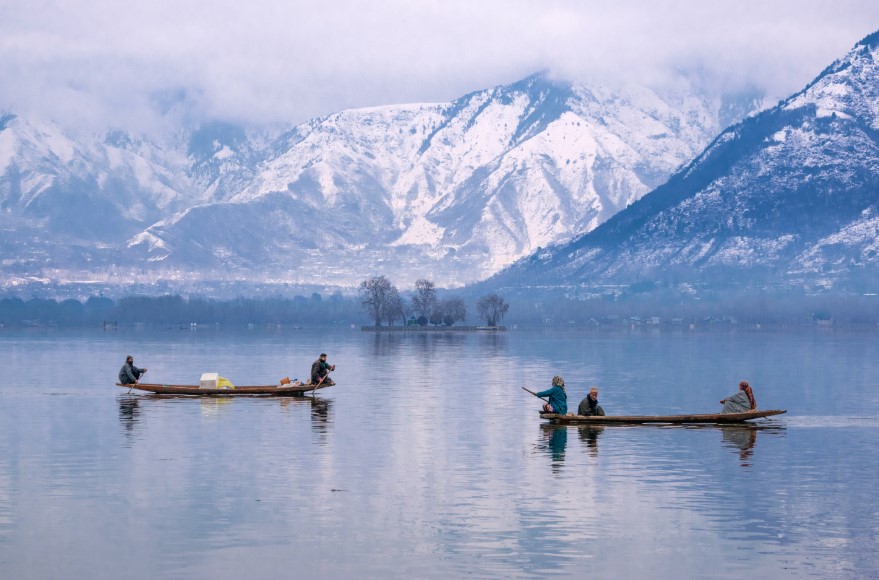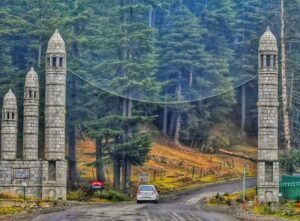When you think of Kashmir, you likely picture Dal Lake Srinagar first. Imagine tranquil waters mirroring snow-kissed Himalayas. Picture ornately carved houseboats and brightly colored Shikaras gliding through lotus-studded channels. Indeed, this scene graces postcards and travel magazines worldwide.
However, Dal Lake Srinagar offers far more than just pretty views. In fact, it serves as the cultural and economic lifeline of Srinagar. Moreover, it’s an ecosystem of floating markets, vegetable gardens, waterborne homes, and centuries-old traditions. This guide will help you navigate the lake’s geography, houseboat stays, Shikara rides, must-visit sights, and essential travel tips.
Did you know? Dal Lake Srinagar was once known as the “Jewel in the crown of Kashmir” by the Mughal emperors who built beautiful gardens along its shores in the 16th century.
Best time to visit: Spring (April-June) when the lake comes alive with blooming lotus flowers. Alternatively, visit in autumn (September-November) when surrounding mountains display spectacular fall colors. Early mornings offer the most peaceful experience.
Why trust this guide? We’ve built it on first-hand traveler experiences, local expert inputs, and up-to-date verified details (April 2025). As a result, you can explore with confidence and curiosity.
Unveiling Dal Lake Srinagar’s Mesmerizing Geography
Dal Lake Srinagar isn’t a single stretch of water. Rather, it’s a network of interconnected basins, channels, and islands. Each area has its own unique character.
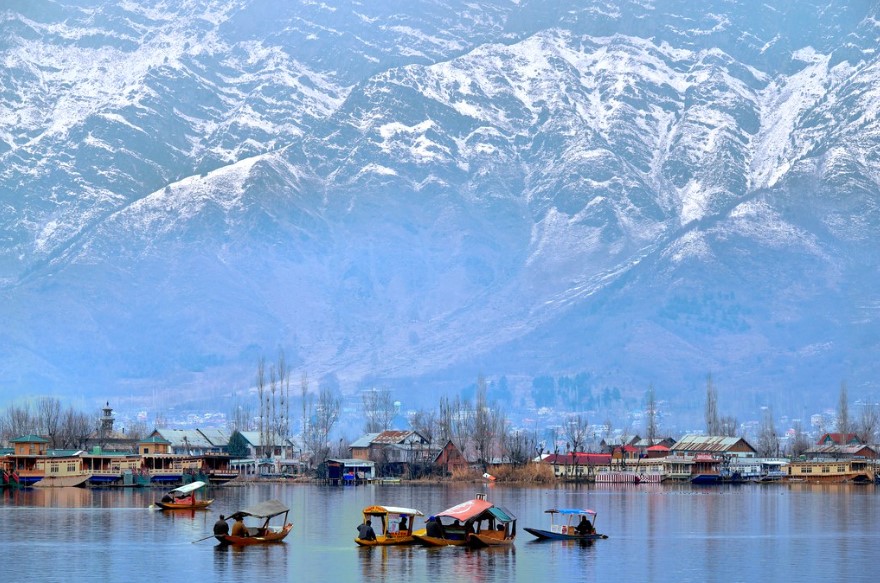
The Main Basins:
Lokut Dal: The “small Dal,” home to the famous Char Chinar island. This intimate section features narrow waterways lined with willows. Additionally, floating gardens create a maze-like experience that feels secluded from busier sections.
Bod Dal: The largest basin, with many of the best houseboats and wide open water views. Here, the vastness of the lake truly unfolds. Consequently, you’ll enjoy breathtaking panoramas of surrounding mountains and spectacular sunsets.
Gagribal: Located near the Dalgate area, a busy hub for Shikara rides and lakeside hotels. This vibrant section pulses with activity. You’ll find vendors selling Kashmiri handicrafts and tourists embarking on their first lake adventures.
Nigeen Lake: Though technically separate, it connects to Dal Lake via a narrow water channel. Furthermore, it offers a quieter, less commercialized alternative. Encircled by willow and poplar trees, its waters are deeper and clearer than the main lake.
Did you know? Dal Lake Srinagar actually covers an area of 18 square kilometers. Yet, it has shrunk from its original 75 square kilometers due to centuries of human settlement.
Best time to visit: Summer mornings (6-9 AM) for misty views of Lokut Dal. Late afternoons offer golden light on Bod Dal. Once evening falls, marvel at the twinkling lights of houseboats across Gagribal.
Floating Gardens & Vegetable Cultivation
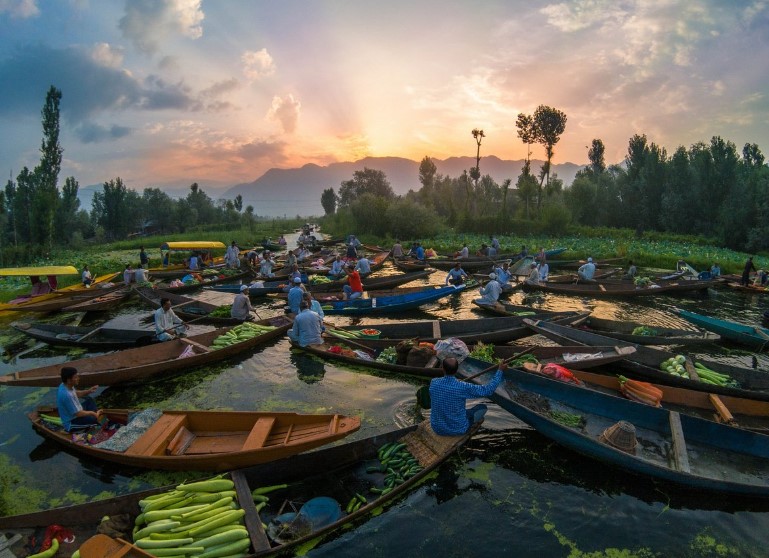
Dal Lake Srinagar is home to ingenious floating gardens called Rad. These gardens consist of layers of vegetation and earth. Here, locals grow vegetables and Kashmir’s prized lotus stems (Nadru). These fertile islands sit just inches above the water. They stay in place with sturdy roots below. At dawn, you’ll spot farmers paddling with freshly harvested greens – a uniquely Kashmiri sight.
Did you know? The floating gardens of Dal Lake Srinagar use a traditional technique that dates back over 500 years. First, locals gather reeds and weeds. Then, they layer them with lake soil to create these productive plots.
Best time to visit: Early summer mornings (5-7 AM) when farmers are most active. Or visit in late spring when the vegetable bounty peaks.
Key Ghats (Access Points)
The lake’s public Ghats serve as boarding points for Shikara rides and access routes for houseboats:
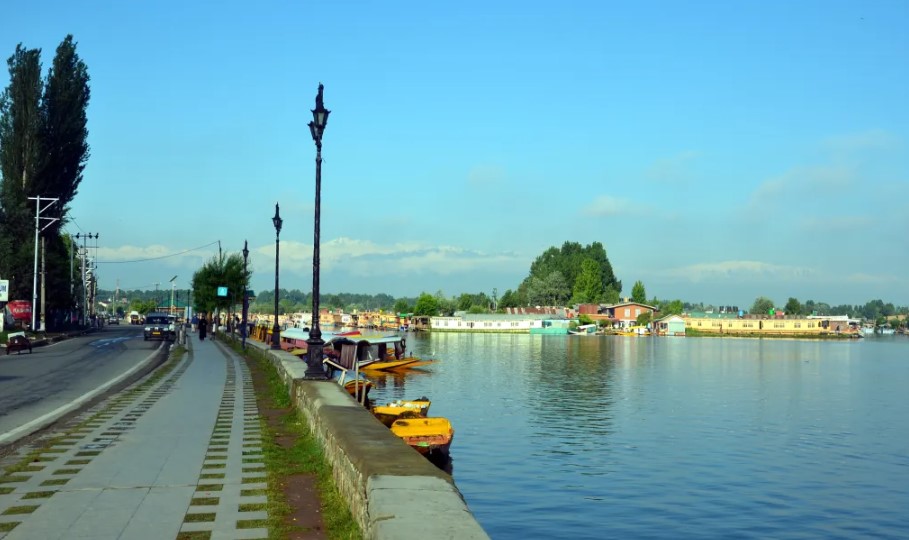
Ghat No. 1 (Dalgate): Main entrance to Dal Lake. It’s a bustling hub with rows of colorful Shikaras waiting for visitors. Meanwhile, snack vendors and souvenir shops line the area.
Nehru Park Ghat: Near the floating park, perfect for sunset Shikara rides. As a result of its positioning, expansive views make this a photographer’s paradise, especially during sunset.
Ghat 9 to Ghat 15: Houseboat clusters with varied pricing and atmospheres. Each ghat has its own character. For instance, luxury boats gather near Ghat 9, while more affordable, family-run options appear further along.
Hazratbal Ghats: Less touristy, more immersed in local life. Here, you’ll see more residents than visitors. Therefore, it offers a glimpse into authentic lake culture away from commercial areas.
Each Ghat offers a different perspective on lake life – from bustling bazaars to serene water alleys.
Did you know? The word “Ghat” originally referred to steps leading down to water for bathing or ceremonies. Over time at Dal Lake Srinagar, they’ve evolved into formal docking points.
Best time to visit: Mid-morning (9-11 AM) for Dalgate when tourist activity bustles. In contrast, visit late afternoon (4-6 PM) for Nehru Park Ghat during golden hour. For Hazratbal Ghats, early morning reveals local life.
The Magic of Houseboats: Living on Dal Lake Srinagar

Staying on a houseboat ranks as one of Dal Lake Srinagar’s signature experiences. This tradition began during British colonial days when non-locals couldn’t own land. These floating palaces range from simple wooden structures to elaborate multi-bedroom mansions. Many feature intricate walnut wood carvings, Kashmiri carpets, and ornate furnishings.
Did you know? Many houseboats on Dal Lake Srinagar have remained in the same family for generations. Some boats date back more than 100 years.
Best time to visit: Summer (May-August) for warm evenings on the deck. Alternatively, winter (December-February) offers magical views of snow-covered mountains while you stay cozy inside.
Choosing Your Perfect Houseboat Experience
Location Matters
Boulevard Road Side: Easy road access, lively with vendors and restaurants. On the downside, it can get noisy. Convenience is the main advantage here with the city just steps away. Hence, this location works well for those who want to explore both the lake and Srinagar’s markets.
Interior Lake: Accessible only via Shikara, offering seclusion and beautiful water views. The middle of Dal Lake Srinagar provides total immersion in lake life. You’ll stay far from the hustle and noise of the city.
Nigeen Lake: Ideal for those seeking tranquility, family stays, or a more personal experience. The peaceful atmosphere makes it perfect for longer stays. Additionally, you’ll form deeper connections with your host family.
Categories & Price Points
Luxury (₹7,500–₹15,000/night): Carved walnut panels, plush carpets, heating, WiFi, full power backup. These boats often feature multiple bedrooms and spacious living areas. You’ll also enjoy private decks with panoramic views.
Deluxe (₹4,000–₹7,500/night): Comfortable with traditional décor, variable heating, decent amenities. This option offers a good middle ground. You’ll experience authentic character without the premium price.
Budget (₹2,000–₹4,000/night): Basic yet clean, with friendly hosts and occasional shared facilities. These often provide the most authentic experience. Moreover, you’ll have direct interaction with Kashmiri families.
Did you know? Traditional Dal Lake Srinagar houseboats are made from deodar cedar wood. This material resists water damage naturally. As a result, it can last for decades with proper care.
Best time to book: Shoulder seasons (April-May and September-October) offer the best combination of good weather and availability. Therefore, book at least 2-3 months ahead for peak summer season.
Amenities to Verify
- Heating options (especially crucial from October to April — ask if it’s electric, gas or wood)
- Meal plans (MAP: breakfast + dinner / AP: all meals — check menu options)
- WiFi (available but speeds vary)
- Hot water (ask about timings)
- Power backup (essential during outages — confirm backup hours)
Booking Strategy
Book early in peak seasons (May-August and December-February). Always read multiple recent reviews on Google, TripAdvisor, and booking platforms. Focus on:
- Cleanliness
- Food quality
- Host hospitality
- Honesty in pricing and inclusions
Experience Tip: “Before booking a houseboat, I always ask if heating charges cost extra during winter. Many don’t mention this upfront. It can add ₹500–₹1,000 per night.”
Trust Check: Rates vary greatly. Therefore, confirm in writing the total price including:
- All meals
- Heating
- Shikara transfers to/from the Ghat
- Taxes and service charges
Shikara Adventures: The Soul of Dal Lake Srinagar
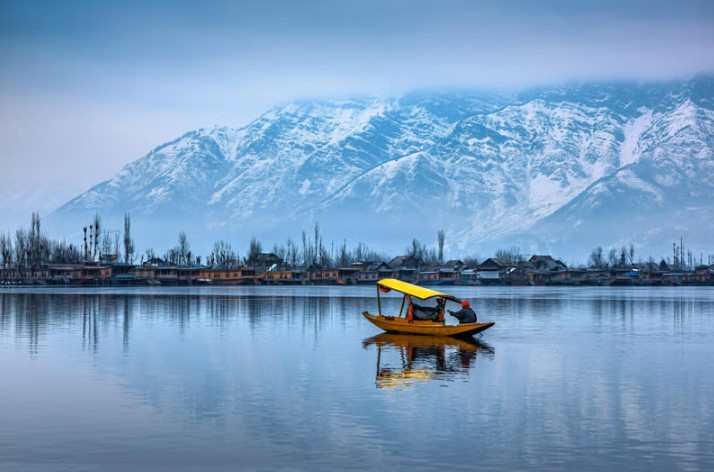
A Shikara ride on Dal Lake Srinagar embodies the essence of slow travel. You’ll glide past floating gardens, lotus fields, and ancient houseboats. The gentle splash of oars accompanies your journey. Local artisans hand-craft these wooden boats with distinctive canopies. They feature comfortable cushioned seating and intricate Kashmir-inspired designs.
Did you know? Shikaras on Dal Lake Srinagar often pass down through generations of boatmen. Some families have plied these waters for over two centuries.
Best time for rides: Early morning (5-8 AM) for the floating market and misty waters. Otherwise, choose golden hour (5-7 PM) for spectacular sunset reflections.
Types of Rides & Common Routes
Sightseeing Loop (1–2 hrs): Nehru Park → Char Chinar → Floating Gardens This classic route introduces main lake highlights. Your oarsman will point out landmarks. Furthermore, they’ll share stories about lake history.
Longer Explorations (3–4 hrs): Inner channels, floating vegetable markets, Hazratbal side For curious travelers, these extended journeys venture into hidden waterways. Few tourists reach these areas. You’ll see families washing clothes and children playing on banks. Moreover, you’ll gain deeper insight into authentic lake life.
Sunset Rides: Perfect for photographers and romantics As the sun sets behind mountains, the lake transforms with golden reflections. Meanwhile, silhouettes of distant houseboats create a magical atmosphere.
Early Morning Market Ride (5–6 AM): Witness the unique boat-to-boat vegetable market This offers an explosion of color and activity. Farmers sell freshly harvested produce directly from boats. Listen for lively bargaining. Watch skilled navigation as boats jostle for position.
Transfer Rides: For commuting between houseboats and the city These short journeys serve as your transit system when staying on a houseboat.
Did you know? The design of Shikaras on Dal Lake Srinagar varies based on purpose. For instance, market Shikaras are wider for goods. In contrast, tourist Shikaras have extra cushioning and canopies.
Best time for each ride: Dawn for the market ride (5-6 AM). Mid-morning (9-11 AM) for sightseeing when light is bright. Late afternoon (4-6 PM) works best for sunset tours.
Costs, Duration & Negotiation
Official Rate (April 2025): ₹900/hour (subject to local confirmation)
Real-World Prices:
- ₹600–₹800 per hour after gentle, polite negotiation.
- Longer rides can be negotiated at a fixed rate.
Must-do: Before starting, agree on:
- Total duration
- Exact route
- Number of stops
Experience Tip: To avoid being taken only to handicraft shops (a common sales ploy), politely decline if uninterested. Additionally, clarify your preferred route upfront.
Unmissable Experiences on Dal Lake Srinagar
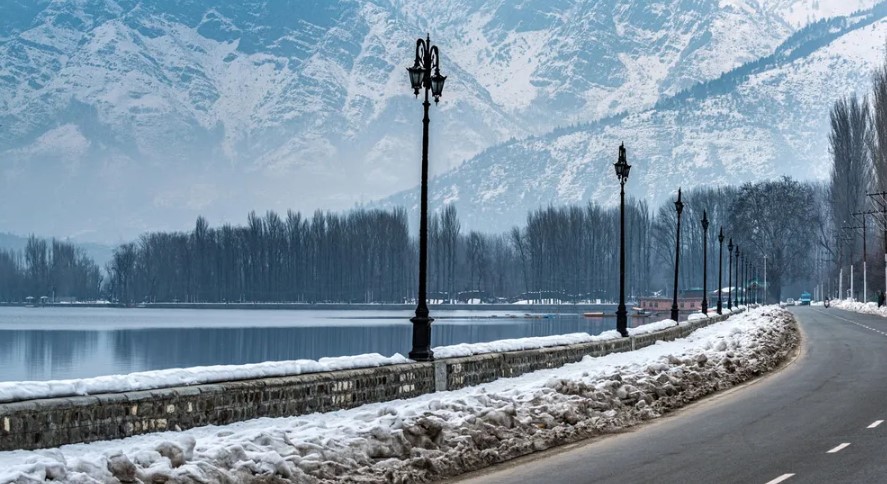
Nehru Park
A small island garden park on Dal Lake Srinagar, accessible only by Shikara. It’s ideal for picnics, photography, and short rest stops. The park features manicured lawns and flower beds. Furthermore, it offers stunning mountain views, making it a favorite Shikara stop.
Did you know? Nehru Park was named after India’s first Prime Minister, Jawaharlal Nehru. He had a special fondness for Kashmir and often visited Dal Lake.
Best time to visit: Late morning (10-12 PM) for clear mountain views. Alternatively, visit late afternoon (4-6 PM) for softer light and fewer crowds.
Char Chinar
An iconic island once boasting four magnificent Chinar trees. Today, two still stand proudly. It’s best visited at sunset for golden water reflections. The name combines “char” meaning four and “chinar” referring to the ancient plane trees symbolic of Kashmir.
Did you know? Local legend claims Mughal Emperor Jahangir created the Char Chinar island as a gift for his wife Nur Jahan in the 17th century.
Best time to visit: Late afternoon (4-6 PM) when light enhances the rich colors of Chinar leaves. This timing also creates striking reflections.
Floating Vegetable Market
A pre-dawn spectacle where farmers sell vegetables from boat to boat. Arrive by 5:30 AM via Shikara from Ghat 9 or Hazratbal. The market creates a symphony of colors, calls, and movements. Shikaras laden with produce navigate narrow channels with skill.
Did you know? This ranks among the few floating wholesale markets worldwide where no money changes hands during initial transactions. Instead, everything works on credit and settles later.
Best time to visit: 5:00-6:30 AM, with peak activity around 5:30 AM. Summer months offer easier early rising with more daylight.
Floating Shops
Mobile vendors on Shikaras sell flowers, handicrafts, saffron, spices, and hot tea. These water-bound merchants showcase Kashmir’s famous products. You’ll find everything from pashmina shawls to walnut wood carvings. They bring the bazaar experience directly to tourists on the lake.
Did you know? Many floating shop owners can trace their lake trading heritage back five generations. Traditional knowledge passes from parent to child.
Best time to visit: Mid-morning to early afternoon (10 AM-2 PM) when most vendors work the main tourist routes.
Views of Surrounding Landmarks
From Dal Lake Srinagar, enjoy views of:
Hazratbal Shrine: White-domed Muslim shrine on the northern shore. This gleaming marble structure houses a relic believed to be a hair of Prophet Muhammad. Its reflection in lake waters looks particularly stunning at dawn.
Shankaracharya Temple: Perched high on a hill with panoramic city views. This ancient Hindu temple honors Lord Shiva. It stands on a platform reportedly built by King Sandiman around 2500 BCE.
Hari Parbat Fort: Ancient fort with layers of Srinagar’s history. Emperor Akbar built it originally. Later rulers expanded it. Its imposing walls tell stories of Kashmir’s complex past.
Did you know? Dal Lake Srinagar offers one of the few places worldwide where you can view important religious sites of multiple faiths – Islamic, Hindu, and Buddhist – from one vantage point.
Best time to view: Early morning for Hazratbal when it catches first light. Mid-day works best for clear views of Shankaracharya Temple. For Hari Parbat, choose sunset when its walls glow amber.
Boulevard Road Promenade
A lively lakeside road lined with cafes, handicraft stores, and food stalls. It’s perfect for evening walks and people-watching. This tree-lined stretch follows the western shore of Dal Lake. As a result, it offers continuous views of water and mountains while providing access to Srinagar’s best shopping.
Must-Try: Seekh Kebabs and pink Noon Chai (salt tea) from street vendors.
Did you know? The British built Boulevard Road in the late 19th century. Initially, they reserved it for European visitors only.
Best time to visit: Evening (6-9 PM) when locals come out for strolls. During this time, food stalls operate fully. Moreover, the lake takes on a mystical quality with houseboat lights reflecting in the water.
Essential Tips for Your Dal Lake Srinagar Adventure
Getting Around:
Use Shikaras for lake travel. For land journeys, choose autos or taxis along Boulevard Road. To explore deeper channels and backwaters, hire a Shikara for a half-day. Look for a knowledgeable oarsman who can serve as an informal guide.
Did you know? The skilled Shikara oarsmen of Dal Lake Srinagar can navigate the narrowest channels with precision. They use heart-shaped paddles, which have kept the same design for centuries.
Best time for transportation: Early morning or evening to avoid midday traffic around Boulevard Road. For general Shikara availability, mid-morning works best.
Dealing with Floating Vendors:
A simple, polite “No, thank you” works if you’re not interested in buying. Most vendors respect your decision once they understand. If interested, friendly bargaining is expected. In fact, it’s part of the experience.
Did you know? Many floating vendors on Dal Lake Srinagar speak multiple languages learned from international tourists. Therefore, they serve as unofficial cultural ambassadors.
Best approach: Morning for the freshest flowers and produce. Afternoon offers more relaxed handicraft browsing.
Water Quality Awareness:
Swimming isn’t recommended due to inconsistent water conditions. Dal Lake Srinagar functions as a working lake with areas of varying cleanliness. In recent years, the government has launched several cleaning initiatives. Nevertheless, conservation efforts continue.
Did you know? Dal Lake Srinagar hosts over 1,200 species of plants and animals. This creates a unique ecosystem that conservationists work to preserve.
Conservation note: Summer presents more water quality challenges than spring and fall.
Responsible Tourism Reminder:
Help preserve Dal Lake Srinagar by:
- Disposing waste properly
- Refusing plastic bags
- Supporting authentic local businesses and artisans
- Learning about ongoing conservation efforts
Embracing the Soul of Kashmir: Final Thoughts on Dal Lake Srinagar
A visit to Dal Lake Srinagar goes beyond mere sightseeing. Instead, it offers immersion into Kashmir’s living culture. Mornings bring floating vegetable markets at dawn. Evenings deliver starlit Shikara rides. Throughout your stay, enjoy houseboats surrounded by mountain silhouettes. Indeed, every moment here weaves magic.
When visiting Dal Lake Srinagar, look beyond the postcard image. Stay longer. Venture deeper. Carry home more than photographs – carry stories. The rhythm of life on these waters has remained largely unchanged for centuries. As a result, it offers a rare glimpse into a world where land and water blend seamlessly with tradition and daily life.
Did you know? Local Kashmiris say once you drink the water of Dal Lake Srinagar, you’re destined to return. This speaks to the magnetic pull this place has on visitors.
Best time for a complete experience: April-June and September-October offer the perfect balance. You’ll enjoy good weather, reasonable crowds, and full access to all lake attractions.
Whether you’re floating past lotus gardens at dawn or watching sunset paint the waters gold from your houseboat deck, Dal Lake Srinagar exceeds expectations. It’s not just a destination – it’s a feeling that stays with you long after leaving these enchanted waters.
